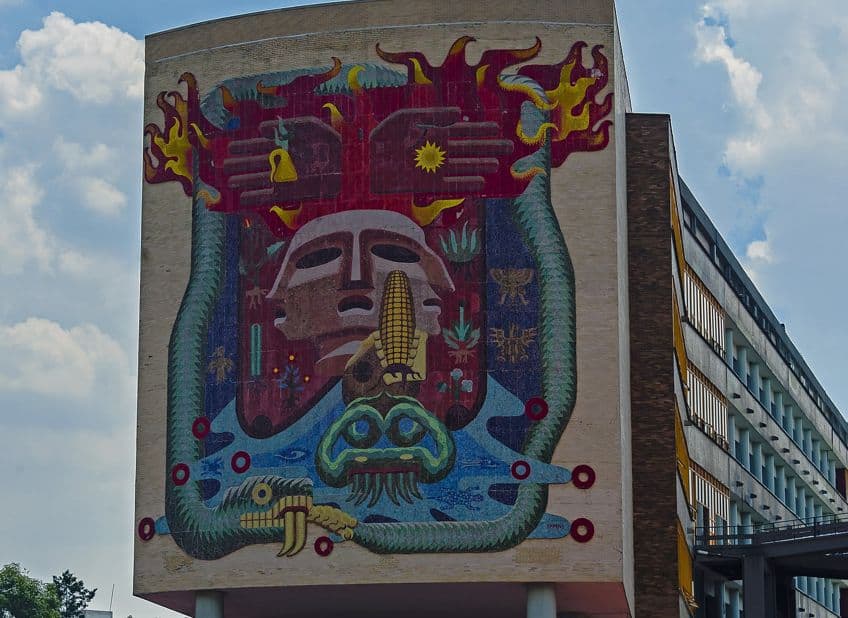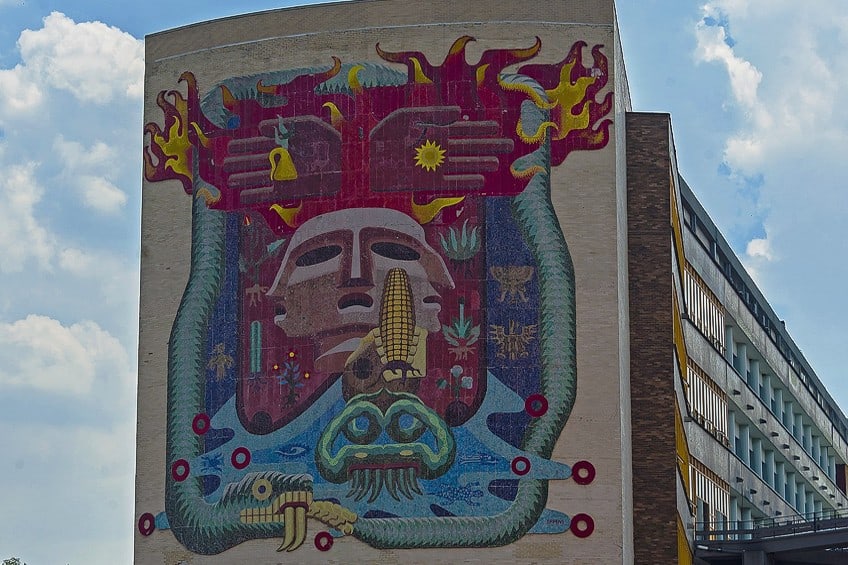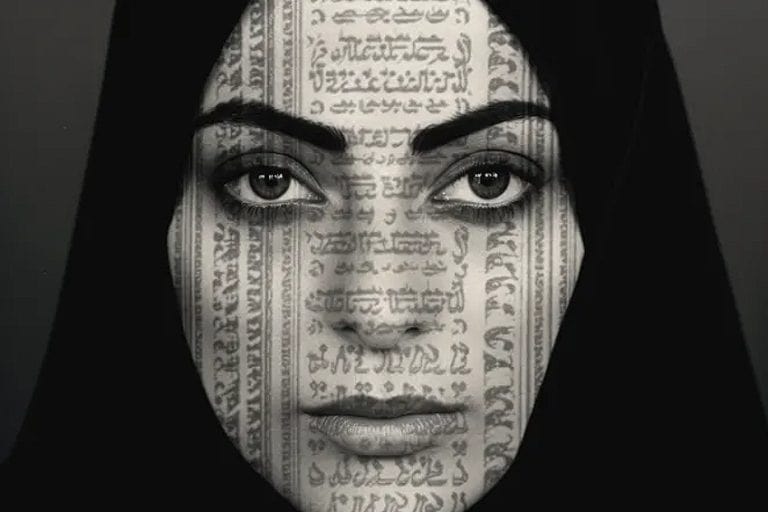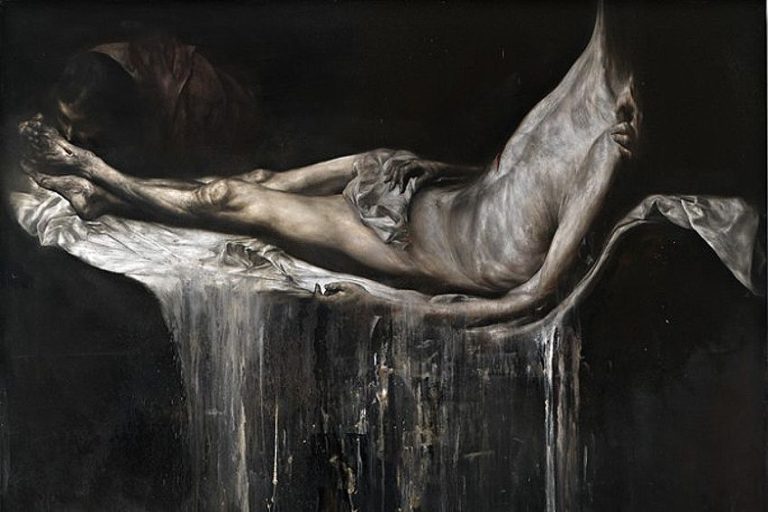Famous Mexican Painters – The Top 10 Painters to Know
From Mexican folk art to Mexican muralism, the art history of Mexico spans a rich expanse of iconic artists, who have propelled the gems of Mexican culture and history to the forefront of art history. In this article, we will reveal the top 10 most famous Mexican painters in art history. From José Clemente Orozco to Julio Galán, and many more, you can be sure to find your favorite Mexican painter on our list! Read on for more about these Mexican art legends and their brilliant contributions to Modern art!
An Introduction to Mexican Art History
Mexican art history is jam-packed with creative and unique art styles that showcase the complex and nuanced history of Mexico and its socio-political events that shaped the works and identities of many famous artists. Mexican art can be understood in its different eras, from the Mesoamerican period to the development of art in the post-war era. Major events such as the Mexican Revolution and the Mexican War of Independence vastly influenced the development of Mexican nationalism and identity across the country around the 19th century and beyond.
Spanish colonial rule, which lasted for around 300 years, also introduced art styles and approaches that saw early Mexican art develop its roots in religion and the ruling classes.
From casta paintings to history paintings, the Mexican art scene was never short of expressing the complex history of the land. With the introduction of European techniques and styles in Mexico, many artists also began fusing indigenous themes and folk art with European styles. The independence of Mexico also enabled artists to pursue the development of their own identities outside of their Spanish past and move towards Social Realism in the 20th century.

Mexico’s identity was thus shaped by a sense of nationalism, a passion for Mexican culture, folk art, and traditional symbols, which set it apart from other art styles of the time. After the 1950s, Mexican art began to break away from muralist styles and integrated foreign styles and approaches from Asia and across the globe. Many Mexican painters have also embraced digital mediums and contemporary styles that helped broaden the spectrum of exploring and developing Mexican identity, culture, and symbolism.
Today, artists such as Frida Kahlo and Diego Rivera rank among the highest-selling Mexican painters on auction, whose works sell for up to millions.
The Top 10 Most Famous Mexican Painters
Throughout Mexican art history, there have been numerous influential and iconic painters, who have become the faces of many global and dominant movements. From Surrealism to muralism, these top 10 Mexican painters continue to be celebrated for their contributions to establishing Mexican identity on the global art scene.
José Clemente Orozco (1883 – 1949)
| Artist Name | José Clemente Orozco |
| Date of Birth | 23 November 1883 |
| Date of Death | 7 September 1949 |
| Nationality | Mexican |
| Associated Movements, Themes, and Styles | Social Realism, Mexican muralism, Modern art, Mexican Mural Renaissance, and fresco painting |
| Mediums | Painting, printmaking, and caricature |
| Famous Artworks |
|
Renowned Mexican muralist José Clemente Orozco was among the most famous Mexican painters of the early 20th century. Orozco specialized in Social Realism paintings and themes that were informed by the styles of Mexican icons like José Guadalupe Posada. Orozco graduated from the Academia de Bellas Artes de San Carlos and by the age of 21, he had unfortunately suffered an accident, which caused him to lose his left hand.
Orozco’s career began in caricature and illustration, which saw him create and publish many works based on socio-political critique of the time.

One of the key influences in Orozco’s life was his experience in his childhood town Guadalajara, where he was first drawn to art. The famous muralist went on to create many iconic paintings, including The House of Tears (1912), Prometheus (1930), and the Guadalajara frescoes between 1936 and 1939. In addition to being a talented painter, Orozco was also a skilled printmaker who used a printmaking technique called lithography.
Diego Rivera (1886 – 1957)
| Artist Name | Diego María de la Concepción Juan Nepomuceno Estanislao de la Rivera y Barrientos Acosta y Rodríguez |
| Date of Birth | 8 December 1886 |
| Date of Death | 24 November 1957 |
| Nationality | Mexican |
| Associated Movements, Themes, and Styles | Mexican muralism, Modern art, Cubism, Synthetic Cubism, Impressionism, Post-Impressionism, Realism, Social Realism, history painting, and Mexican culture |
| Mediums | Painting |
| Famous Artworks |
|
Diego María Rivera was one of the most famous Mexican painters in art history, who was also regarded as one of the best Mexican muralists. Rivera received significant recognition on the global art scene for his large-scale public murals that were informed by the chaotic political history of Mexico, as well as Marxism and the political leader Che Guevara.
His legacy on Mexican art was so profound that his work influenced the way that America conceived of public art. Many will also identify the artist with his former partner Frida Kahlo, whose relationship with her sparked the two’s artistic careers.

Rivera was also the inspirational figure behind the emergence of the WPA program by Franklin Delano Roosevelt, which inspired and influenced many American painters to use public art to address political issues. Among Rivera’s best-known works include paintings such as Zapata-style Landscape (1915) and The Flower Carrier (1935).
Adolfo Best Maugard (1891 – 1964)
| Artist Name | Adolfo Best Maugard |
| Date of Birth | 11 June 1891 |
| Date of Death | 25 August 1964 |
| Nationality | Mexican |
| Associated Movements, Themes, and Styles | Modern art, Impressionism, Mexican folk art, caricature, and Modernism |
| Mediums | Painting, drawing, filmmaking, directing, and screenwriting |
| Famous Artworks |
|
Professionally known as Fito Best, Adolfo Best Maugard was one of the most famous Mexican painters of the early 20th century, who was also a prominent filmmaker, screenwriter, and director. Fito Best studied in Europe, where he gained the acquaintance of Diego Rivera, who captured Maugard’s image in various portraits. Maugard was also an educator who taught art plein air at many Mexican schools and introduced his style in figurative caricature.
By 1922, more than 200,000 art students in Mexico were influenced and shaped by the styles taught by Maugard, which was captured best in his drawing publication titled “Manuales y Tratados: Metodo de dibujo: tradition, resurgimiento y evolucion del arte mexicano” (1923).

Maugard was also commissioned by the government to assist in the production of the film ¡Que viva México!, which was led by the Russian director Sergei Eisenstein. Additionally, Maugard also founded the universalism technique for drawing alongside several elements of drawing, which he detailed in his book Drawing Method: Tradition, Resurgence, and Evolution of Mexican Art. His contribution to Mexican art education and history was also captured in his theories around Mexicanidad and preceding ideas for the later Mexican School. His teachings also drew from art inspired by pre-Hispanic art.
David Alfaro Siqueiros (1896 – 1974)
| Artist Name | David Alfaro Siqueiros |
| Date of Birth | 29 December 1896 |
| Date of Death | 6 January 1974 |
| Nationality | Mexican |
| Associated Movements, Themes, and Styles | Social Realism, Mexican muralism, public art, Communism, Marxism, and political art |
| Mediums | Painting |
| Famous Artworks |
|
David Alfaro Siqueiros was another prolific Social Realism painter who was also a key member of the Mexican muralist group and the Mexican Communist Party. Siqueiros’ public murals mirrored his political ideology, of which he was an avid activist since his early adult years. Siqueiros also fought for the Venustiano Carranza army in 1913, during the same time as the Mexican Revolution. He also studied in Mexico City at the San Carlos Academy of Fine Arts and later resumed his art studies in Europe after the battle.
His return to Mexico saw his involvement with the mural decorations at the National Preparatory School, as well as serving as an active member and organizer of many artist unions and groups.

Siqueiros was jailed multiple times throughout his life for his role in activist efforts and was likewise exiled many times. Today, many of his works can be found in government institutions across Mexico that showcase Siqueiros’ dynamic and sculptural approach to painting. Some of Siqueiros’ most intriguing paintings include Portrait of the Bourgeoisie (1939–1940) and Peasant Mother (1962).
Rufino Tamayo (1899 – 1991)
| Artist Name | Rufino del Carmen Arellanes Tamayo |
| Date of Birth | 25 August 1899 |
| Date of Death | 24 June 1991 |
| Nationality | Mexican |
| Associated Movements, Themes, and Styles | Modern art, Surrealism, figurative abstraction, Zapotec heritage, Mexican culture, and still-life |
| Mediums | Painting |
| Famous Artworks |
|
Rufino Arellanes Tamayo was one of the most respected and renowned Mexican painters of the modern period, whose unique fusion of European styles and Mexican folk themes resulted in some of the most vibrant and innovative Mexican paintings.
Tamayo’s presence on the global art scene was profound since it showed the Western art world a new perspective of Mexican art that was informed by non-political themes.
This made Tamayo stand out from other Mexican artists of the modern era. He was also a celebrated colorist and innovative painter, whose works reflected his expert skills in texture and surface. Tamayo’s paintings also explore themes such as humankind’s longing for the infinite and the shifting nature of civilization.
Rosario Cabrera (1901 – 1975)
| Artist Name | Rosario Cabrera |
| Date of Birth | 5 June 1901 |
| Date of Death | 30 December 1975 |
| Nationality | Mexican |
| Associated Movements, Themes, and Styles | Modern art, Realism, landscape art, portraiture, and Impressionism |
| Mediums | Painting |
| Famous Artworks |
|
Rosario Cabrera is considered to be an icon of the Mexican Renaissance, who studied under the famous Impressionist Saturnino Herrán at the National School of Fine Arts. Cabrera was influenced by academic Modernism, which drove her to settle in Europe and become a member of the Open Air Schools of Painting as a teacher. She also served as a director of the Los Reyes Open Air School of Painting, however, her career was cut short after she lost her faith in the post-revolutionary educational system and stopped painting in the 1930s.
Cabrera’s style can be observed in some of her most famous works such as “Mirella Asúnsolo” (c. 1900 – 1999) and “Convento del Carmen” (c. 1928).
Frida Kahlo (1907 – 1954)
| Artist Name | Magdalena Carmen Frida Kahlo y Calderón |
| Date of Birth | 6 July 1907 |
| Date of Death | 13 July 1954 |
| Nationality | Mexican |
| Associated Movements, Themes, and Styles | Surrealism, Symbolism, Magic Realism, Naturalism, Primitivism, and Modern art |
| Mediums | Painting and drawing |
| Famous Artworks |
|
Perhaps the most cherished Mexican painter, Frida Kahlo was among the most famous Surrealism painters of the 20th century. Lauded for her personal expression of love, pain, and Mexican culture, Kahlo’s paintings remain a significant part of Modern Mexican art history.
Through her vibrant and symbolic self-portraits, Kahlo’s paintings are seen as prime examples of Mexican Feminism that celebrates Kahlo’s position as a prominent female artist who celebrates her indigenous culture while exploring her personal life events through the female gaze.

Her fame grew rapidly after her death and was revived completely in the 1970s with the rise of Western Feminism. Two of the most impactful events in Kahlo’s life were her divorce from Diego Rivera owed to his disloyalty in their marriage and the artist’s early automobile accident, which left her physically disabled and in chronic pain. Among Kahlo’s best paintings include The Wounded Deer (1946) and Diego y yo (1949).
Remedios Varo (1908 – 1963)
| Artist Name | María de los Remedios Alicia Rodriga Varo y Uranga |
| Date of Birth | 16 December 1908 |
| Date of Death | 8 October 1963 |
| Nationality | Mexican |
| Associated Movements, Themes, and Styles | Surrealism and Modern art |
| Mediums | Painting and illustration |
| Famous Artworks |
|
María de los Remedios Alicia Rodrigo Varo y Uranga, who was better known as Remedios Varos, was a famous Mexican Surrealist of the 20th century. Varos’ experiences with poverty and war informed her artistic career as she worked across France, Mexico, and Spain. Her career was also inspired by her father, who was an engineer who first introduced her to drawing.
Varos was also associated with the European Surrealists and explored subjects like analytical psychology and alchemy in her work.

As a refugee in Paris, Varos’ security was also threatened after Spanish refugees were arrested during World War II. After her time in jail, Varos had to flee once again due to the Nazis’ invasion of Paris and entered Mexico by the end of 1941. Varos gained acquaintance with other Hispanic artists and Surrealists such as Leonora Carrington, who was also respected in Mexican art history. It was during her career as a commercial illustrator that she developed her mature style and spent the rest of her life developing her art. Among Varos’ most unique works include Eyes on the Table (1938) and Embroidering the Earth’s Mantle (1961).
Francisco Eppens Helguera (1913 – 1990)
| Artist Name | Francisco Eppens Helguera |
| Date of Birth | 1 February 1913 |
| Date of Death | 6 September 1990 |
| Nationality | Mexican |
| Associated Movements, Themes, and Styles | Modern art, Mexican muralism, Nationalism, glass mosaic murals, Mexican folk art, colonial architecture, religious iconography, and national symbols |
| Mediums | Painting, sculpture, and design |
| Famous Artworks |
|
Famous sculptor and painter Francisco Eppens Helguera was a champion of Mexican muralism and Nationalism in the late 20th century. Helguera graduated from the Fine Arts Academy of San Carlos and was inspired by styles that emerged from the Mexican Renaissance, which was also known as the Mexican School of Painting.
Helguera explored painting through figurative and symbolic elements to relay his perspective on reality.

His works also ranged from monumental to small, with his style often compared to that of his contemporary Jorge González Camarena. Helguera was also a member of the Integración Plástica group and the National Front of the Arts. A few interesting Mexican paintings by Helguera include Arquitectura Colonial Prehispánica (1984) and Caballos de Colores (1985).
Julio Galán (1958 – 2006)
| Artist Name | Julio Galán |
| Date of Birth | 5 December 1958 |
| Date of Death | 4 August 2006 |
| Nationality | Mexican |
| Associated Movements, Themes, and Styles | Surrealism, Neo-Expressionism, Modern art, and autobiographical art |
| Mediums | Painting and collage |
| Famous Artworks |
|
Julio Galán was recognized as one of the most famous painters from Mexico whose works fused pre-Columbian styles and Roman Catholicism with homosexuality. Galán’s works are highly influential and autobiographical, which mirrored the approaches found in early Modern icons like Francesco Clemente and Frida Kahlo. Galán was born in Múzquiz and graduated from the University of Monterrey after studying architecture.
He abandoned architecture to pursue painting and relocated to New York City in 1984, where he was recognized by Pop artist Andy Warhol. Warhol had a few of his works published in Interview magazine, which elevated his career.

By the late 20th century, Galán was considered to be one of the most famous Mexican artists in the art world. His works have also been exhibited internationally at institutions such as the Museum of Modern Art, the Stedelijk Museum, and the Centre Georges Pompidou. Sadly, Julio Galán’s career was cut short after he passed away in 2006 at the young age of 46. Galán’s style, however, has been preserved in his mixed-media oil paintings, which combine elements of collage and Surrealism with almost contemporary and Neo-Expressionist styles.
These famous painters from Mexico have inspired countless contemporary artists to embrace the beauty of autobiographical, symbolic, and cultural artworks that express the cultural nuances that shape us. We hope that these top 10 Mexican painters have provided you with valuable insight into the key figures who shaped modern Mexican art.
Take a look at our Mexican painters webstory here!
Frequently Asked Questions
Who Were the Three Most Famous Mexican Modernists of the 20th Century?
Of the many great Mexican Modernists of the 20th century, Diego Rivera, David Alfaro Siqueiros, and José Clemente Orozco are considered to be the top three pioneers of Mexican Modernism.
Who Is the Most Expensive Mexican Painter?
Frida Kahlo is considered to be the most expensive Mexican painter, whose painting titled Diego y Yo (1949) sold for a massive $34.8 million at Sotheby’s in 2021, making the work the highest known price paid for a work by a Mexican artist.
Who Are the Two Most Famous Painters from Mexico?
Two of the most famous painters from Mexico are widely considered to be Frida Kahlo and Diego Rivera, both of whom are also two of the most expensive Mexican artists.
Jordan Anthony is a film photographer, curator, and arts writer based in Cape Town, South Africa. Anthony schooled in Durban and graduated from the University of the Witwatersrand, Johannesburg, with a Bachelor of Art in Fine Arts. During her studies, she explored additional electives in archaeology and psychology, while focusing on themes such as healing, identity, dreams, and intuitive creation in her Contemporary art practice. She has since worked and collaborated with various professionals in the local art industry, including the KZNSA Gallery in Durban (with Strauss & Co.), Turbine Art Fair (via overheard in the gallery), and the Wits Art Museum.
Anthony’s interests include subjects and themes related to philosophy, memory, and esotericism. Her personal photography archive traces her exploration of film through abstract manipulations of color, portraiture, candid photography, and urban landscapes. Her favorite art movements include Surrealism and Fluxus, as well as art produced by ancient civilizations. Anthony’s earliest encounters with art began in childhood with a book on Salvador Dalí and imagery from old recipe books, medical books, and religious literature. She also enjoys the allure of found objects, brown noise, and constellations.
Learn more about Jordan Anthony and the Art in Context Team.
Cite this Article
Jordan, Anthony, “Famous Mexican Painters – The Top 10 Painters to Know.” Art in Context. September 28, 2023. URL: https://artincontext.org/famous-mexican-painters/
Anthony, J. (2023, 28 September). Famous Mexican Painters – The Top 10 Painters to Know. Art in Context. https://artincontext.org/famous-mexican-painters/
Anthony, Jordan. “Famous Mexican Painters – The Top 10 Painters to Know.” Art in Context, September 28, 2023. https://artincontext.org/famous-mexican-painters/.











